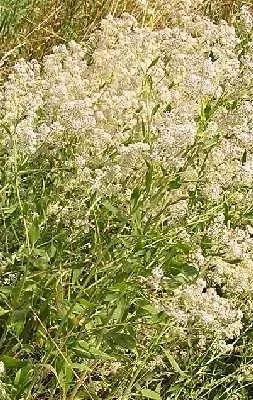
Broad-leaved pepperweed, also called tall pepperweed, perennial peppergrass, tall whitetop, giant whiteweed, and ironweed is an herbaceous perennial that can grow up to 5 feet tall. Plants have many stiff, upright stems that grow from a woody crown of roots. Old stems persist through the winter with rosettes of leaves at the base. The basal leaves, which have long petioles, are up to 1 foot long and 3 inches wide; they have serrated margins, and taper at the end. Leaves on the stems are smaller, have shorter petioles or are attached to the stalk, and may have smooth margins. Leaves and stems are waxy and bright green or gray green. Plants blossom from summer to fall, with dense clusters of very small flowers forming at the ends of the stems. The flowers have 4 white petals, 4 green sepals, 6 stamens, and a single pistil. The fruits are small, flat pods that are about 1/10th inch long; each holds 2 tiny, flattened, reddish-brown seeds. Plants smell (and taste) like horseradish.

Appearance
Lepidium latifolium is a perennial that can grow from 1-5 ft. (0.3-1.5 m) in height. In the late fall to early spring a rosette of leaves develops with 4-12 in. (10-30 cm) long and 1-2 in. (2.5-5 cm) wide, toothed leaves. Plants emerge from thick, minimally branched roots or semi-woody crowns. Individuals remain as a rosette for several weeks before the stem elongates.
Foliage
Rosette leaves are long petiolate. Cauline (stem) leaves are alternate, 1-3 in. (2.5-7.6 cm) long and oblong.
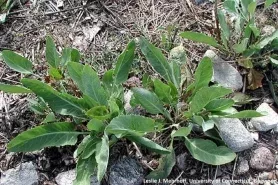
Flowers
Flowering occurs in the late spring to summer, when flat, dense clusters of flowers develop at the apex of the flowering stem. Individual flowers are 4-petaled and white.
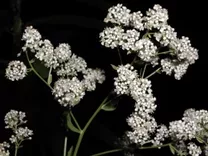
Fruit
The fruit is a round to oval, hairy capsule that is 0.06 in. (1.5 mm) in diameter. It contains a single seed.
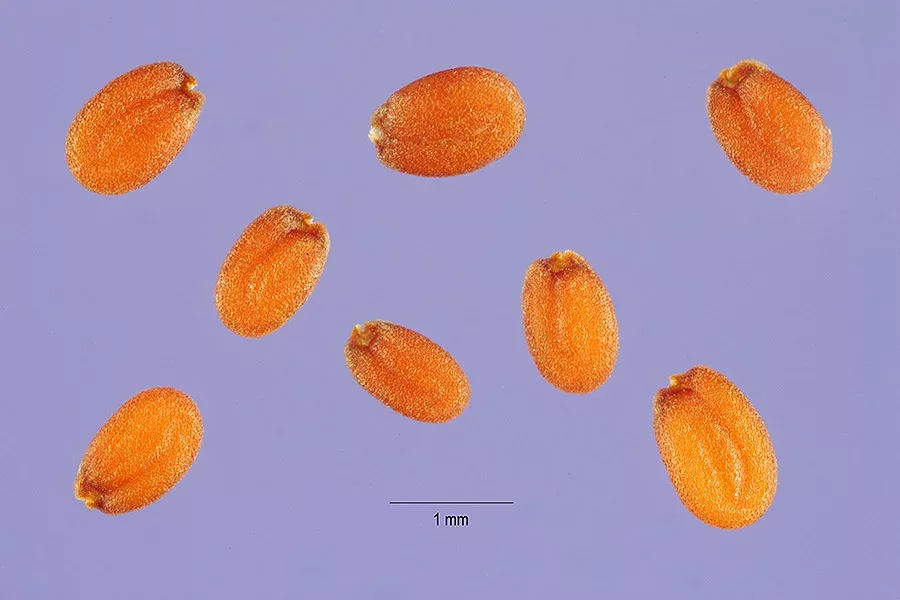

Broad-leaved pepperweed forms large stands that crowd out native plants and reduce the habitat for native birds, insects, and other animals. Its primary habitat in New England is salt marshes, where it competes with native salt marsh grasses (Spartina spp.) and other salt marsh vegetation. Broad-leaved pepperweed sometimes grows on the edges of salted roads and highways.

Native to southern Europe and western Asia, broad-leaved pepperweed may have been accidentally introduced into the United States in shipments of sugar beet seeds. It is now found throughout the West. In the East, it is primarily found on the coastlines of New York, Connecticut, Massachusetts, New Hampshire, and Maine.
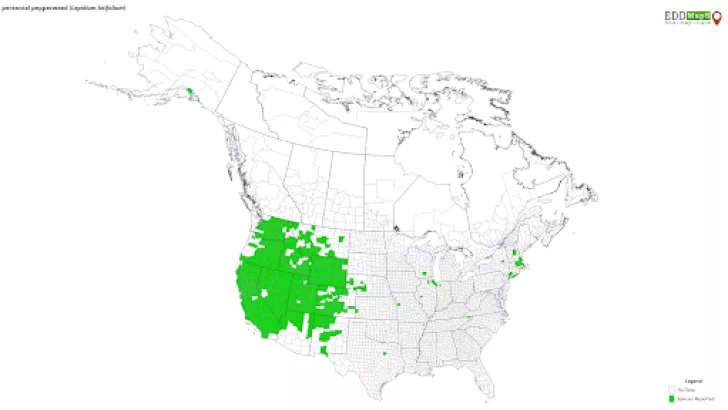

Mechanical: Not recommended due to the extensive root system. Continual mowing before the seed set may help suppress populations.
Chemical: Mowing or grazing in spring followed by foliar spray of chlorsulfuron or imazapyr. Foliar spray of glyphosate at flower bud stage on small populations.
For more information on control techniques, visit the Perennial pepperweed factsheet [exit DNR] by the University of Wisconsin-Extension.
